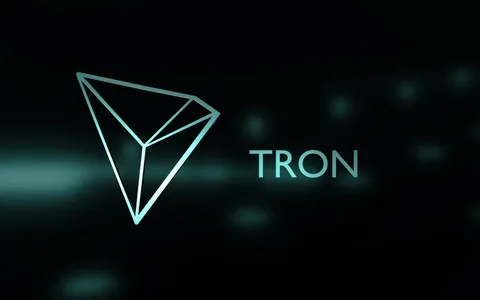Exchanging Tron (TRX) is an incredibly simple process that be done by anyone with a few clicks of the mouse. The first step to exchanging Tron is to acquire a wallet that supports TRX, such as the official Tron Wallet or another compatible service. Once a suitable wallet has been acquired, users can then move their TRX into it for safekeeping and to ensure that the assets are ready for when they need them at the time of exchanging.
The next step for those looking to exchange their Tron tokens is to find a platform or service through which to make the trades. There are numerous options available, including exchanges such as Binance, Poloniex and Huobi Global, all of which have been created specifically for this purpose. Each platform has its own set of advantages and disadvantages, so users should carefully consider which one best meets their needs before proceeding.
Once you decide upon an exchange platform or service, the next step is to create an account and begin trading. This usually involves entering personal information such as name and address, along with uploading verification documents in order to prove identity. Most exchanges will also require users to activate two-factor authentication (2FA) in order to protect their accounts from unauthorized access or theft.
After setting up an account on your preferred exchange platform or service, users will be able to start trading immediately by transferring funds from their wallets into the exchange’s wallet system. The process works much like other cryptocurrency transactions; simply enter in your wallet’s details along with the amount you wish to send and click “confirm” once you have reviewed all of the transaction details. After a brief wait period (usually between 1-3 minutes), your funds will be deposited into your new exchange account and you can start trading!
When it comes time to execute trades on these exchanges, there are generally two types: market orders and limit orders. A market order is one where buyers put in an offer at whatever price is currently being offered by sellers on the open market; while limit orders allow buyers and sellers set specific prices they would like to buy/sell at respectively. There are also sometimes additional features such as stop losses that allow traders more flexibility when deciding how they would like their trades executed.
For those looking for more advanced trading strategies beyond simple buy/sell orders there are also numerous options available such as margin trading and futures contracts (which must be done through specialized platforms). Margin trading allows traders greater leverage by borrowing funds from other traders or lenders; while futures contracts give investors exposure to price movements without actually owning any of the underlying asset itself – often used for hedging positions or taking advantage of favorable price swings during periods of low volatility.
Given its unique characteristics – particularly its high speed transactions – Tron (TRX) has become increasingly popular among both crypto enthusiasts and more traditional investors alike due to its potential use cases in various industries ranging from finance & banking applications all the way through gaming & streaming media services. As such, it may be worthwhile exploring some of these opportunities if one wishes a different approach than simply buying & selling TRX directly via exchanges or wallets themselves.
No matter what type of trader you are – whether just getting into cryptocurrencies for fun or looking for advanced strategies – exchanging Tron can be both straightforward yet challenging at times depending on your goals or expectations going in; but thankfully there are ample resources available online today offering advice & support throughout every stage of this journey!
